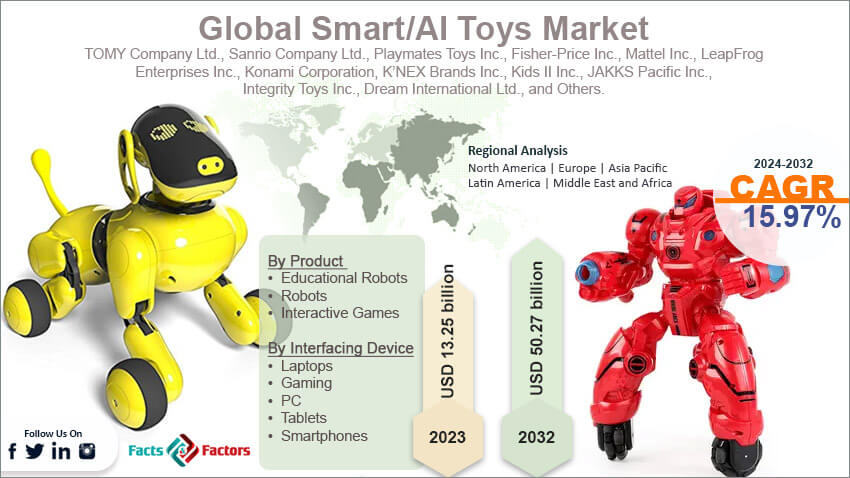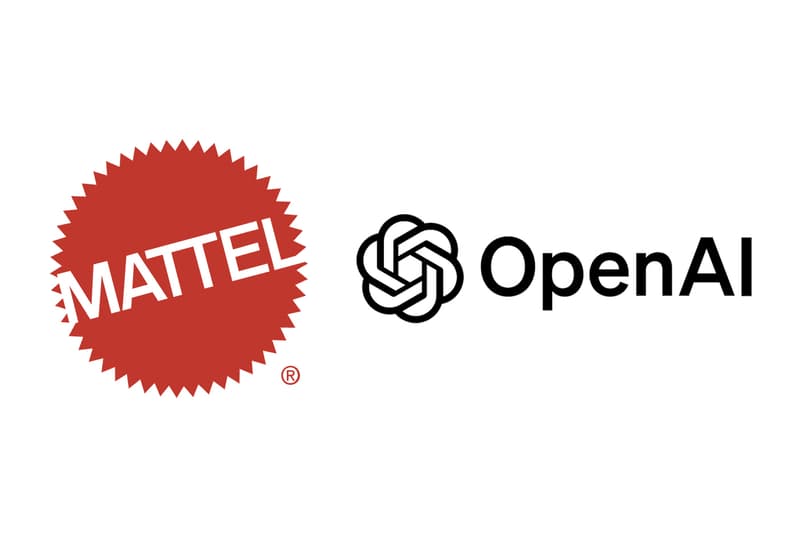
The New Playmakers: How AI Giants and Toy Titans Are Revolutionizing the Playroom
The toy industry is standing at the precipice of its most profound transformation since the advent of video games. A new wave of innovation, fueled by groundbreaking collaborations between legacy toy manufacturers and the world’s leading artificial intelligence firms, is set to completely redefine the nature of play. These partnerships are moving beyond simple voice commands and pre-programmed responses, ushering in an era of truly intelligent, adaptive, and conversational smart toys. This convergence of creative design and computational power promises to turn the toy box into a dynamic ecosystem of learning, creativity, and companionship. As we delve into the latest AI Toy Collaboration News, it’s clear that the fusion of iconic brands with sophisticated AI is not a distant future concept; it is the new reality shaping the next generation of childhood experiences, presenting both unprecedented opportunities and critical new challenges for parents, educators, and the industry itself.
The Dawn of a New Era: Why Big Tech and Big Toy Are Joining Forces
The recent surge in high-profile partnerships between toy companies and AI developers is not a coincidence but a strategic convergence driven by mutual necessity and opportunity. For both industries, this collaboration represents a critical step forward, unlocking markets and capabilities that were previously out of reach. This trend is a leading indicator in the latest Smart Toy News, signaling a fundamental shift in product development and market strategy.
The Strategic Imperative for Toy Manufacturers
For decades, traditional toy companies have faced mounting pressure from the digital world. The allure of tablets, smartphones, and video games has captured a significant share of children’s attention, forcing toy makers to innovate or risk obsolescence. The initial response involved integrating basic electronics, but today’s landscape demands far more sophistication. To compete, toy brands must offer experiences that are just as engaging, personalized, and dynamic as their digital counterparts. By partnering with AI leaders, they gain instant access to cutting-edge technology like natural language processing, computer vision, and machine learning. This allows them to infuse their beloved characters and play systems—from interactive dolls to robot building blocks—with genuine intelligence, transforming them from passive objects into active participants in a child’s world. The latest AI Toy Trends News confirms that consumers are increasingly seeking these deeper, more interactive play patterns.
The Untapped Market for AI Companies
Simultaneously, AI giants are on a constant quest for new, mainstream applications for their powerful platforms. While their technologies have revolutionized enterprise software, data analysis, and online services, the consumer home—and specifically the playroom—remains a largely untapped frontier. The toy market offers a massive, family-friendly entry point to introduce AI to a new generation in a tangible, friendly form. These collaborations serve as a powerful showcase for their technology, moving it from the abstract cloud to a physical, interactive AI Companion Toy. Furthermore, it provides AI developers with invaluable data on human-computer interaction in a developmental context, helping them refine their algorithms for more natural, intuitive, and emotionally resonant communication. This expansion is a key topic in Toy AI Platform News, as it demonstrates the versatility and broad applicability of their core AI models.
The Synergy of Creation
Ultimately, the power of these collaborations lies in their synergy. Toy companies bring decades of expertise in child psychology, safety standards (a crucial aspect of AI Toy Safety News), character intellectual property, and global distribution networks. They understand what makes a toy fun, engaging, and safe. AI companies, in turn, provide the technological backbone—the complex algorithms, cloud infrastructure, and continuous learning capabilities. Neither party could effectively create the next generation of smart toys alone. The toy brand ensures the product is a beloved companion, while the tech firm ensures that companion is truly smart. This potent combination is what makes the current wave of AI Toy Brand News so revolutionary.
Under the Hood: The Technology Powering Next-Gen Smart Toys
The magic of modern AI toys isn’t just a clever gimmick; it’s the result of a sophisticated stack of technologies working in concert. These collaborations are integrating enterprise-level AI into child-friendly hardware, creating experiences that were the stuff of science fiction just a few years ago. Understanding this technology is key to appreciating the depth of this new category of play.

From Voice Commands to Conversational AI
The most significant leap forward is the shift from basic voice recognition to true conversational AI. Early Voice-Enabled Toy News focused on toys that could respond to a limited set of pre-programmed commands like “sing a song” or “what’s the weather?” The new generation, powered by Large Language Models (LLMs), can engage in open-ended, dynamic conversations. An Interactive Doll News feature might now highlight a doll that doesn’t just recite a story but can co-create a new one with the child, remembering characters and plot points from previous play sessions. This technology allows for unprecedented personalization. A toy can learn a child’s interests, adapt its vocabulary, and even develop a unique “personality” over time. This capability is central to the rise of AI Storytelling Toy News, where the toy becomes a collaborative creative partner.
Sensors, Computer Vision, and Environmental Awareness
Beyond conversation, advanced AI toys are being equipped with a suite of sensors that give them awareness of their physical environment. The latest AI Toy Sensors News details the integration of high-resolution cameras, multi-array microphones, accelerometers, and touch sensors. This hardware, combined with computer vision algorithms, allows a toy to “see” and “understand” its surroundings. For example, a feature in AI Pet Toy News might describe a robotic puppy that can recognize its owner’s face, find its specific charging dock, or visually identify and fetch its favorite ball. Similarly, Robot Building Block News is now filled with creations that can navigate a cluttered room, avoid obstacles, and respond to visual cues, bringing a child’s construction to life in a truly autonomous way.
The Role of Cloud and App Integration
Much of the heavy lifting for these toys is done not in the toy itself, but in the cloud. By offloading the most intensive processing to remote servers, manufacturers can keep the hardware relatively simple and affordable while delivering incredibly powerful AI capabilities. This cloud connectivity is also crucial for longevity. It allows for continuous AI Toy Updates News, where a toy’s features, vocabulary, and games can be improved and expanded over time through over-the-air software updates. The ecosystem is often completed with a companion mobile app, a central theme in AI Toy App Integration News. These apps provide a dashboard for parents to monitor usage, set educational goals, and manage privacy settings. For the child, the app can unlock new content, offer customization options (a key topic in AI Toy Customization News), and provide a platform for more complex interactions, seamlessly blending physical and digital play.
Redefining Play: The Impact on Education, Creativity, and Social Development
The integration of advanced AI into toys does more than just enhance traditional play; it fundamentally redefines its potential. These intelligent companions are becoming powerful tools for learning, catalysts for creativity, and new figures in the social development of children. This multifaceted impact is a recurring theme in reports from the AI Toy Exhibition News circuit to in-depth AI Toy Research News.
The Rise of Personalized Learning Companions
One of the most promising applications of AI in toys is in education. Unlike static educational software, an AI-powered toy can function as a personalized tutor that adapts to a child’s unique learning style and pace. This is a dominant trend in STEM Toy News and Educational Robot News. For instance, a Coding Toy News story might feature a robot that introduces programming concepts through interactive games. If the child struggles with a concept like “loops,” the robot can detect this and offer different examples or a simpler explanation until the concept is mastered. This adaptive learning can be applied across numerous subjects, with a surge in AI Language Toy News and AI Science Toy News showcasing toys that teach vocabulary or explain scientific principles through engaging, conversational play.
Fostering Creativity and Imagination

Rather than stifling imagination with pre-scripted experiences, sophisticated AI can act as a creative collaborator. The focus of AI Art Toy News and AI Drawing Toy News is shifting to products that don’t just instruct but inspire. Imagine an AI-enhanced easel that can suggest color combinations, offer creative prompts (“What if we drew a friendly monster living on the moon?”), or even transform a child’s simple sketch into a beautiful, stylized piece of art in the manner of a famous painter. Similarly, AI Musical Toy News reports on smart instruments that can help a child compose their first song by suggesting harmonious notes or creating a backing track that matches their melody. The toy becomes a partner in the creative process, encouraging experimentation and building confidence.
The New AI Companion: A Friend or a Device?
Perhaps the most profound and debated impact is in the realm of social-emotional development. The latest AI Companion Toy News and AI Plushie Companion News highlight products designed explicitly to offer companionship, engage in empathetic conversation, and help children navigate their emotions. For a child experiencing loneliness or social anxiety, a responsive, non-judgmental AI friend could be a valuable comfort. However, this also raises critical questions that are central to the discourse in AI Toy Ethics News. What is the nature of a child’s bond with an AI? Does it support or hinder the development of real-world social skills? The industry must navigate this territory carefully, designing toys that augment, rather than replace, human connection.
Navigating the New Playroom: Best Practices and Future Considerations
As intelligent toys become more prevalent, it’s crucial for parents, developers, and brands to approach this new frontier with a mindful and informed perspective. The excitement of innovation must be balanced with a rigorous commitment to safety, ethics, and genuine developmental value. Making the right choices will determine whether this technology becomes a beneficial part of childhood or a source of unforeseen problems.
For Parents and Consumers: What to Look For

When considering an AI-powered toy, parents should look beyond the flashy features.
- Privacy and Security First: This is the most critical consideration. Look for brands with transparent, easy-to-understand privacy policies. Inquire about data encryption, where data is stored, and who has access to it. Strong parental controls are non-negotiable. This is the central concern of all AI Toy Safety News.
- Longevity and Support: A smart toy is a technology product. Check the manufacturer’s plan for ongoing support and updates. A toy that receives regular feature and security updates, as reported in AI Toy Updates News, offers far more long-term value than one that is abandoned after launch.
- Purposeful Play: Scrutinize the toy’s core purpose. Does the AI genuinely enhance the play experience and offer educational or creative value, or is it a gimmick? Consulting independent AI Toy Reviews News and community forums can provide honest feedback from other users.
For Developers and Brands: Key Challenges to Overcome
The path to creating a successful and responsible AI toy is fraught with challenges that go beyond just engineering.
- Data Ethics and Responsibility: Handling data collected from children is an immense responsibility. Brands must adhere to the strictest regulations (like COPPA in the US) and be transparent with parents about what data is collected and why. The ethical frameworks discussed in AI Toy Ethics News must be at the core of product design.
- Avoiding the Uncanny Valley: There is a fine line between a charming, intelligent companion and a creepy, unsettling device. The design, voice, and conversational abilities must be carefully crafted to feel natural and endearing, not intrusive or strange.
- Cost and Accessibility: The advanced technology in these toys often comes with a premium price tag. The industry must explore ways to make these enriching experiences more accessible, perhaps through tiered products or AI Toy Subscription News models, to avoid creating a “play gap” between children from different socioeconomic backgrounds.
The Future of Play: What’s Next?
The current collaborations are just the beginning. The latest AI Toy Future Concepts News points toward even deeper integration. We can expect hyper-personalization, where a toy companion grows and evolves with a child over years. Integration with augmented and virtual reality (a hot topic in AR Toy News and VR Toy News) will blend physical toys with interactive digital worlds. We may also see the rise of open Toy AI Platform News, allowing a community of developers and even kids themselves to create new skills and personalities for their toys, fostering a vibrant ecosystem akin to a mobile app store. From AI Drone Toy News featuring autonomous racing to AI Puzzle Robot News about bots that can solve a Rubik’s Cube with you, the potential for innovation is boundless.
Conclusion
The convergence of established toy brands and AI technology leaders marks a pivotal moment in the history of play. These collaborations are not merely about making toys “smarter”; they are about creating entirely new categories of interactive experiences that can educate, entertain, and provide companionship in ways previously unimaginable. The resulting products—from conversational dolls to creative robots—hold the promise of personalizing learning, amplifying imagination, and offering novel forms of emotional support. However, this exciting future is accompanied by a profound responsibility. The long-term success of this revolution will hinge on the industry’s unwavering commitment to ethical design, robust data security, and the genuine well-being of children. As the playroom becomes more intelligent, our choices as consumers and creators must be just as thoughtful.



